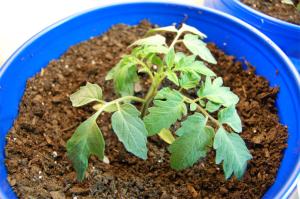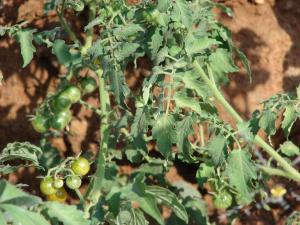- Science
- Grade KG
- Organisms and environments
Science.K.13.D
identify ways that young plants resemble the parent plant.

Knowledge and Skills Statement
The following is an example of how to assess proficiency of this student expectation (SE) or a portion of the SE.
While many plants change in appearance as they grow into larger adult plants, there are often some similarities between young plants and their adult counterparts. Have students glue a picture of an adult "parent" plant in their notebook. Underneath or beside the picture, have students draw and color what the young plant might have looked like. Using a sentence frame, have students tell how the young plant was similar to the parent plant. "The young plant has __________ that look like the parent plant." "The young plant is _________ like the parent plant." Have students share their drawings and sentences with a peer. Students might recognize that young tomato plants have leaves that look similar to the adults or they might recognize that a pine tree seedling has the same leaves as adult pine trees.
The further explanation is designed to be a resource for educators that helps them better understand the topic their students are learning. Further explanations may be written at a more complex level than would be expected for students at the grade level.
One way in which young plants might resemble their parent plant is by having similar leaf shape and structure.
Young tomato plant
Dennis Brown at English Wikipedia, CC BY-SA 3.0 <https://creativecommons.org/licenses/by-sa/3.0>, via Wikimedia Commons
Adult tomato plant
Forest & Kim Starr, CC BY 3.0 <https://creativecommons.org/licenses/by/3.0>, via Wikimedia Commons
Research
Trundle, Kathy Cabe, Katherine N. Mollohan, and Mandy McCormick Smith. 2013. “Plants, Alike and Different.” Science and Children: Early Childhood Life Science 50, no. 6 (February 2013): 52–57. http://www.jstor.org/stable/43176365. Accessed 17 Nov. 2022.
Summary: Students' curiosity about the natural world can be used to help guide life science instruction. "Plants, Alike and Different" explains that early elementary students should understand that parent plants look similar to their offspring. Teachers can use the Play, Discuss, Explore learning cycle to teach this concept in Kindergarten. Play is important because it allows students to practice different types of plants and generate questions. Students should observe different types of the same plant and look for similarities and differences. These observations can be recorded in the form of drawings. As a class with teacher guidance, these drawings can be used to create data charts where students can easily see the results.
Research
National Research Council. 2012. A Framework for K-12 Science Education: Practices, Crosscutting Concepts: Practices, Crosscutting Concepts, and Core Ideas. Washington: National Academies Press. https://doi.org/10.17226/13165.
Summary: Early childhood students should understand that plant offspring look similar to the parent plant but are not identical. This chapter explains the biological principle of heredity, which explains why children resemble their parents. Genes are passed down from the parent generation to the child.


